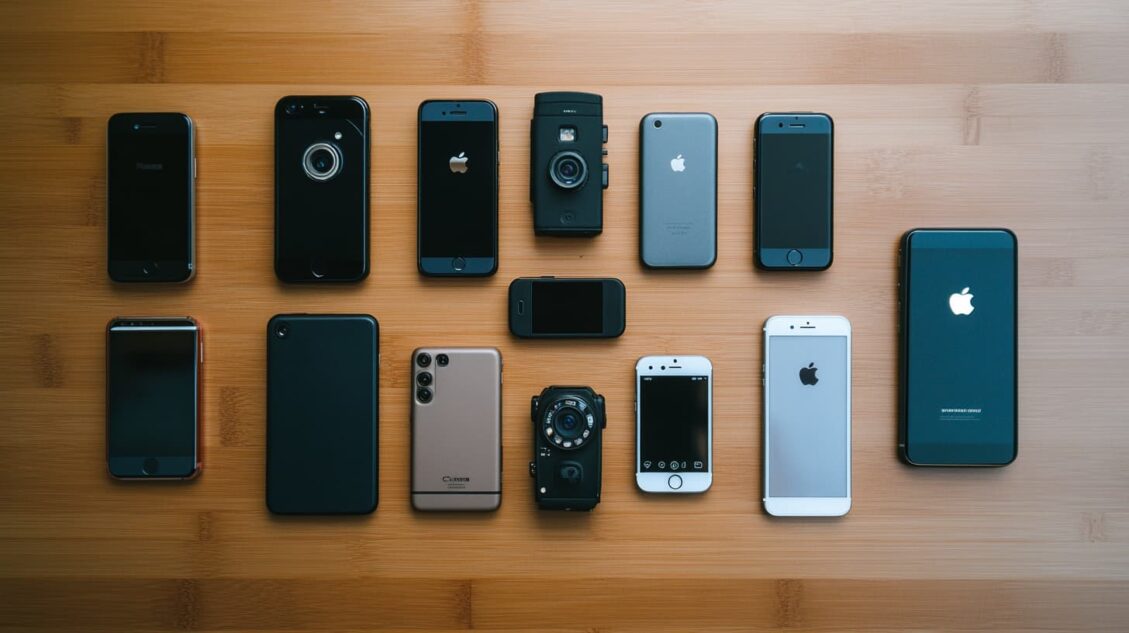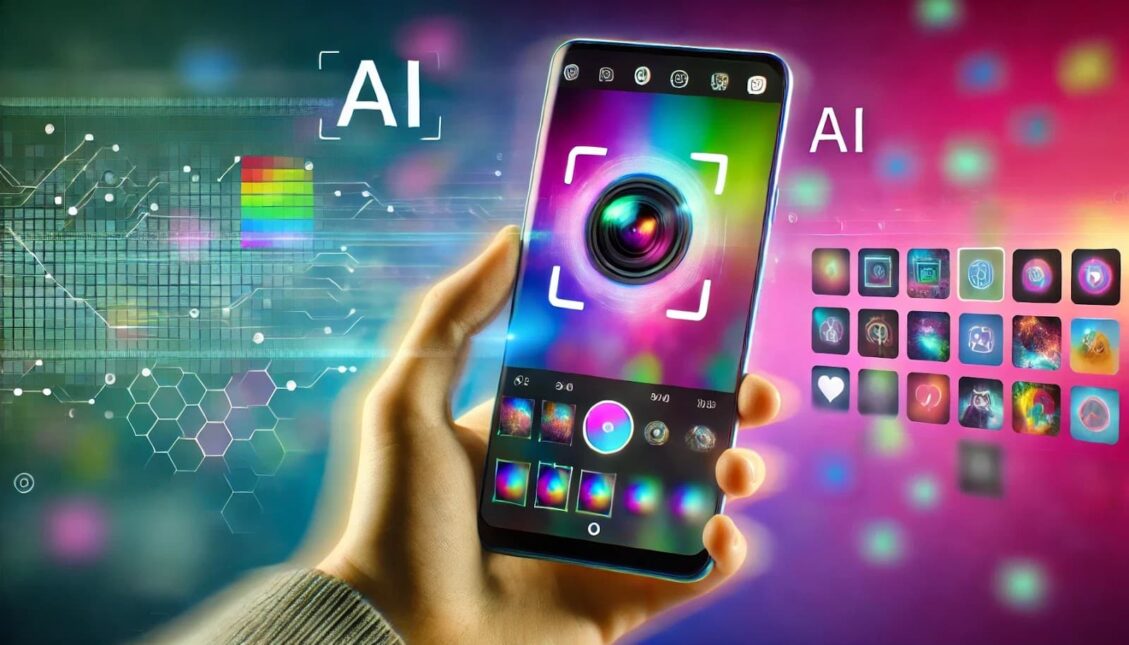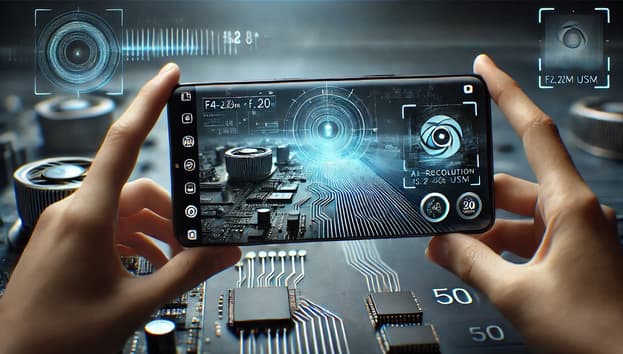Mobile applications have evolved far beyond simple point-and-shoot photography. The integration of sophisticated camera technology has transformed smartphones into powerful tools capable of everything from secure banking authentication to real-time health monitoring. With the global mobile camera module market projected to reach $60.6 billion by 2025, growing at a CAGR of 12.5%, this technological revolution is reshaping how users interact with mobile applications, creating unprecedented opportunities for developers and businesses alike.
The Journey of Mobile Camera Technology
The evolution of mobile camera technology represents one of the most dramatic transformations in consumer electronics history. What began as grainy 0.3-megapixel sensors in early mobile phones has blossomed into sophisticated imaging systems that rival professional cameras. Modern flagship smartphones now feature sensors exceeding 100 megapixels and advanced image signal processors (ISPs) capable of processing billions of operations per second. This evolution is particularly evident in specialized devices like the hawk security camera, which demonstrates how far imaging technology has come.

The initial focus on increasing megapixel count has given way to more nuanced improvements in image processing and computational photography. Modern smartphones now employ multiple lenses, sophisticated sensor arrays, and dedicated neural processing units (NPUs) to capture and process visual data in ways that were unimaginable just a decade ago. Following the lead of advanced systems like the hawk security camera, the integration of time-of-flight (ToF) sensors and LiDAR technology has further expanded the capabilities of mobile cameras, enabling precise depth mapping and enhanced augmented reality experiences.
The Hawk Security Camera by Leopard Imaging
In the realm of advanced camera solutions, Leopard Imaging’s Hawk Security Camera stands as a testament to the possibilities of modern imaging technology. This cutting-edge device exemplifies how specialized camera hardware can enhance mobile application capabilities through its integration of artificial intelligence and advanced sensing technologies.
Leading developers in the security industry have recognized how the advanced features of the Hawk security camera provide unprecedented advantages for modern surveillance systems. Its exceptional low-light performance and AI-powered recognition capabilities, featuring a 1/1.8″ 8MP CMOS sensor with STARVIS™ technology, can capture clear footage in lighting conditions as low as 0.001 lux. The integrated neural processing unit enables real-time object detection and tracking, processing up to 120 frames per second with 99.9% accuracy in optimal conditions.
Mobile applications leveraging the Hawk’s capabilities can offer users unprecedented control over their security systems. Through dedicated APIs and the comprehensive SDK, developers can integrate features such as instant motion detection alerts, facial recognition-based access control, and automated response systems. The camera’s built-in edge computing capabilities reduce latency to under 100ms, enabling real-time response to security events. Several leading security firms have already implemented these features, reporting significant improvements in threat detection accuracy and response times.
Transforming User Experiences Through Advanced Camera Features
The integration of advanced camera technology extends far beyond traditional photography and security applications. Modern mobile apps are leveraging sophisticated camera features to create more engaging and functional user experiences across diverse sectors.
In the healthcare industry, camera-enabled applications now assist in everything from remote diagnosis to medication adherence monitoring. Advanced image processing algorithms can analyze skin conditions with 95% accuracy, track vital signs through facial recognition, and even detect early signs of various medical conditions. These capabilities are particularly valuable in telemedicine applications, where accurate visual assessment is crucial for remote consultations. Recent studies show that AI-powered camera diagnostics can achieve accuracy rates comparable to in-person examinations for certain conditions.
Social media platforms have also been revolutionized by advanced camera technology. Real-time filters and effects powered by sophisticated computer vision algorithms have become standard features, while AR-based tools enable users to try on virtual makeup or visualize furniture in their homes. Platforms implementing these features report up to 30% higher user engagement rates and significantly longer average session durations.
Implementing Advanced Camera Features
The integration of sophisticated camera features presents both opportunities and challenges for mobile app developers. Success in this domain requires careful consideration of hardware capabilities, processing requirements, and user experience design, along with compliance with evolving privacy regulations such as GDPR and CCPA.
Efficient implementation starts with understanding the target device’s camera hardware capabilities and limitations. Developers must optimize their applications to handle high-resolution image processing without compromising device performance or battery life. This often involves implementing sophisticated caching mechanisms and leveraging hardware acceleration where available. Key considerations include:
- Memory management strategies for handling large image data sets
- Battery optimization techniques for continuous camera usage
- Cross-platform compatibility challenges and solutions
- Security protocols for image data transmission and storage
Privacy considerations have become increasingly crucial in camera-enabled applications. Developers must implement robust data protection measures and ensure transparent communication about how visual data is collected, processed, and stored. This includes implementing features such as automatic data encryption, secure transmission protocols, and user-controlled privacy settings. Companies must also consider regional variations in privacy laws and implement appropriate data handling procedures.
The Future Landscape of Mobile Camera Technology
The convergence of 5G networks, edge computing, and advanced AI algorithms is opening new frontiers in mobile camera technology. Emerging technologies such as light field cameras and quantum image sensors promise to further expand the capabilities of mobile applications. Industry experts predict that by 2025, over 75% of smartphones will feature AI-powered camera systems capable of processing complex visual tasks directly on device.

These advancements are enabling more sophisticated augmented reality experiences, improved real-time video processing, and enhanced computer vision capabilities. The integration of edge computing is particularly significant, as it allows for more complex image processing tasks to be performed directly on mobile devices, reducing latency and improving privacy. Sustainable development practices are also gaining importance, with manufacturers focusing on reducing the environmental impact of camera module production and implementing energy-efficient processing algorithms.
Conclusion
The role of advanced camera technology in enhancing mobile application features continues to expand, driven by innovations in hardware, software, and artificial intelligence. From security applications leveraging sophisticated devices like the Hawk Security Camera to healthcare apps utilizing computer vision for diagnosis, the possibilities seem limitless.
As this technology continues to evolve, developers and businesses must stay informed about the latest advancements and best practices for implementation. With proper attention to technical requirements, privacy considerations, and regulatory compliance, organizations can successfully leverage advanced camera technology to create more engaging and valuable mobile applications. The future promises even more exciting developments, with emerging technologies set to further transform how we interact with mobile applications through camera interfaces.
